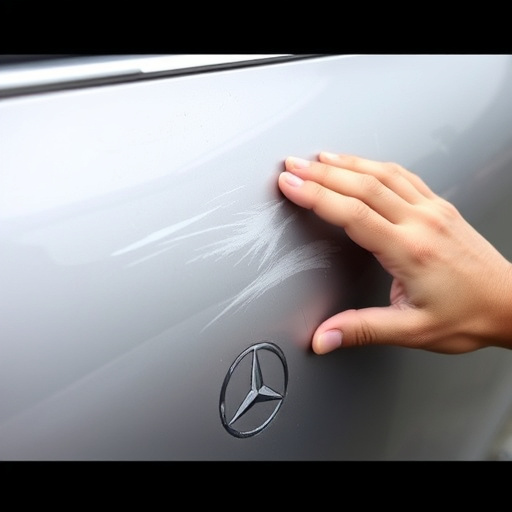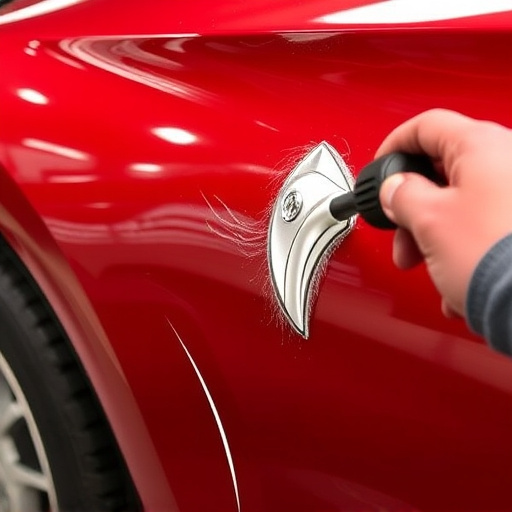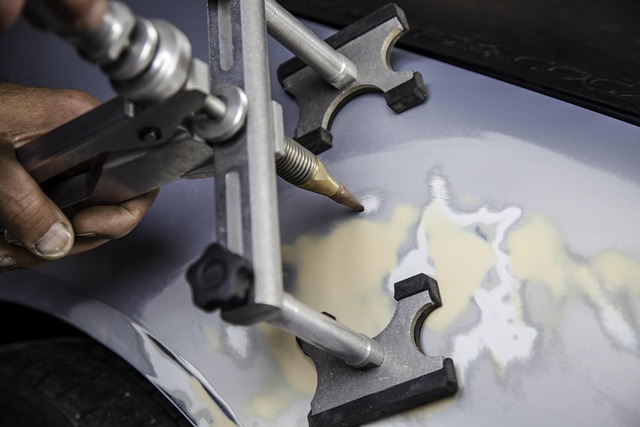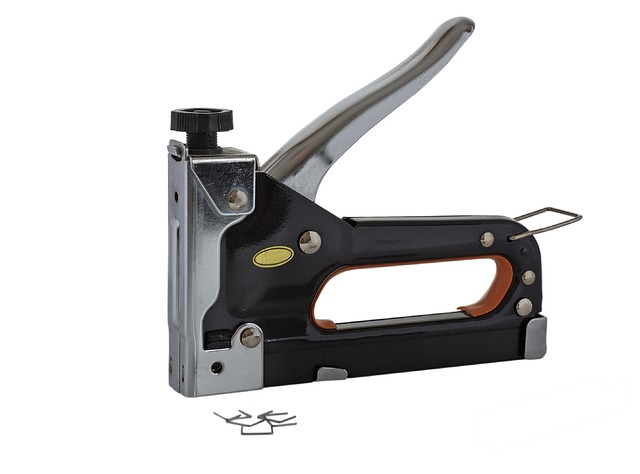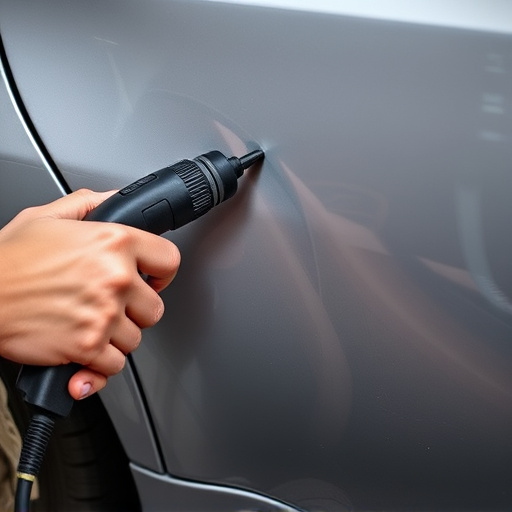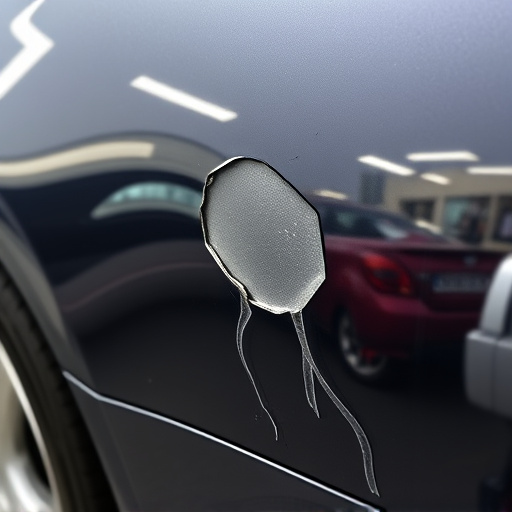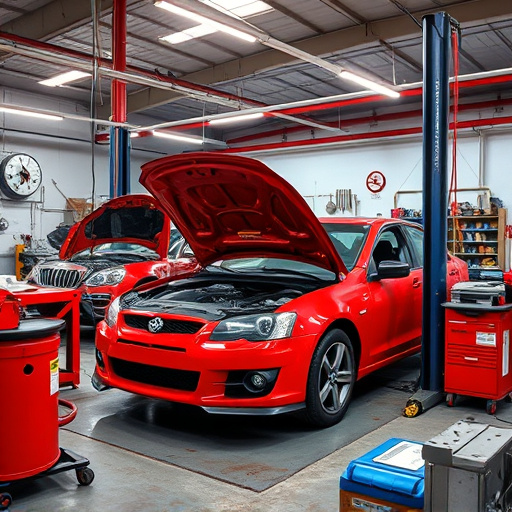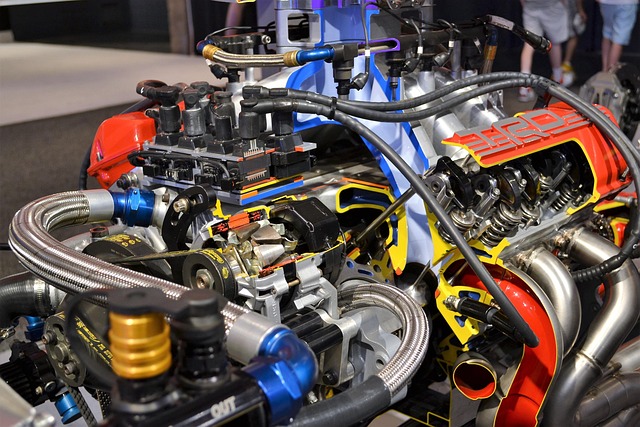Before initiating the dent removal process, professionals conduct a meticulous assessment to determine dent extent and surrounding panel integrity. This includes identifying hidden damage and developing a tailored repair strategy specific to vehicle make and model, such as Mercedes Benz repairs. Understanding different dent types and utilizing specialized tools, from air pressure for minor dents to advanced equipment for complex creases, ensures vehicles return to their original state through expert auto detailing techniques. A thorough initial inspection identifies all damage, including structural issues, enabling precise cost estimates and comprehensive auto dent repair.
“Uncover the step-by-step journey of dent removal, a meticulous art in automotive restoration. From initial assessment to final polish, every phase matters. Begin by meticulously evaluating the damage, noting dent types and potential co-existing issues on your vehicle. Then, prepare the surface, using primers and fillers for a smooth canvas.
Next, select paintless dent repair (PDR) methods or deploy specialized tools to gently reshape metal. Blend seamlessly with surrounding paint, ensuring a flawless finish. Every dent removal process is unique; follow these steps for optimal results.”
- Assessing the Damage and Planning
- – Understanding different types of dents
- – Inspecting the vehicle for other potential damage
Assessing the Damage and Planning

Before diving into the dent removal process, a thorough assessment of the damage is crucial for successful and safe auto body work. This initial step involves meticulously examining the affected area to determine the extent of the dent and the best course of action. Auto body repair professionals use specialized tools to measure and visualize the dent, considering factors like size, depth, and location. This planning phase also includes assessing the surrounding panel integrity, identifying any hidden damage, and preparing a detailed repair strategy tailored to the specific make and model, such as those seen in Mercedes Benz repair scenarios.
By carefully evaluating these aspects, experts can select the appropriate dent removal techniques, whether it’s using specialized tools for gentle extraction or employing more aggressive methods for severe cases. This meticulous assessment ensures that the final restoration not only addresses visible dents but also maintains the structural integrity and aesthetic appeal of the vehicle, achieving results akin to a seamless Mercedes Benz repair.
– Understanding different types of dents

Dents can vary greatly in shape, size, and severity, which is why understanding different types is crucial before diving into the dent removal process. Some dents are shallow and may only affect the vehicle’s paint surface, while others are deep and penetrate the metal itself. Rounded, circular dents known as “dents” or “dimples” are common from minor fender benders, whereas longer, linear marks called “creases” can result from more significant impacts.
Knowing these variations is essential because each type of dent requires a specific approach within the dent removal process. Auto body shops use specialized tools and techniques tailored to address each case, whether it’s using air pressure for minor dents or sophisticated equipment for more complex creases, ultimately aiming to restore the vehicle’s original appearance through proper auto maintenance and automotive repair.
– Inspecting the vehicle for other potential damage
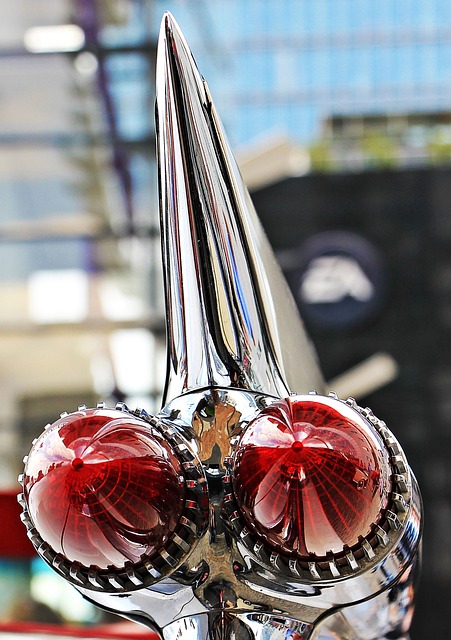
After assessing the dent and determining the extent of damage during the initial stage of the dent removal process, it’s crucial to conduct a thorough inspection of the entire vehicle. This step is vital in auto detailing as it helps identify any other hidden or visible imperfections that might require attention. Other potential damages could include scratches, dents on other panels, or even misalignments in the frame.
Identifying these issues early on ensures comprehensive auto dent repair and prevents future problems. It also allows for a more precise estimate of costs involved in frame straightening, should any structural damage be present. This meticulous approach guarantees that once the dent is successfully removed, the vehicle will be restored to its pre-incident condition, enhancing its overall aesthetics and resale value through expert auto detailing techniques.
Understanding the dent removal process is crucial for effective car repair. By assessing the damage, considering various dent types, and inspecting for associated issues, you lay the foundation for successful restoration. This step-by-step approach ensures that not only the visible dents are addressed, but also any underlying structural integrity is maintained, leading to a seamless and lasting fix.


